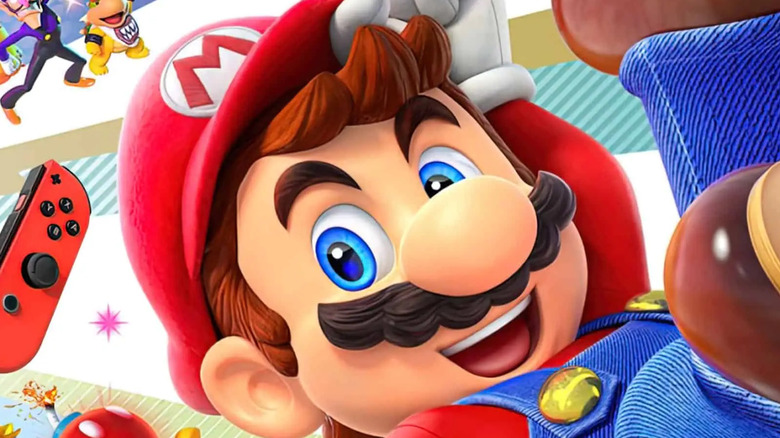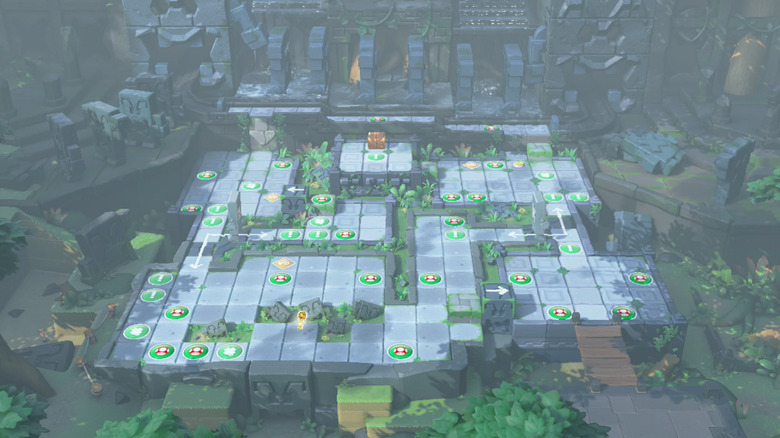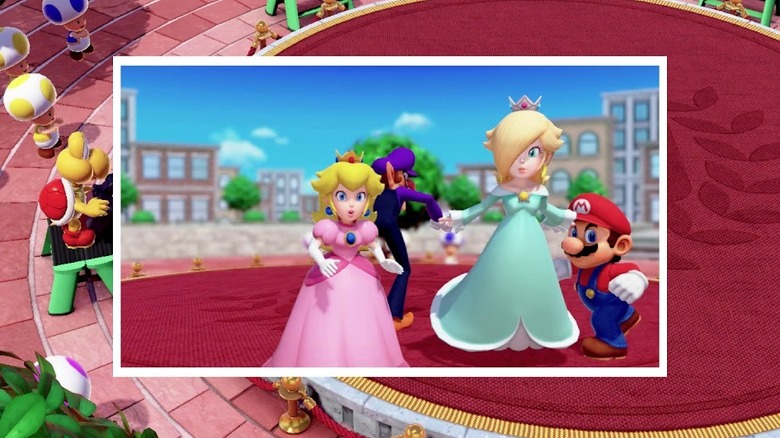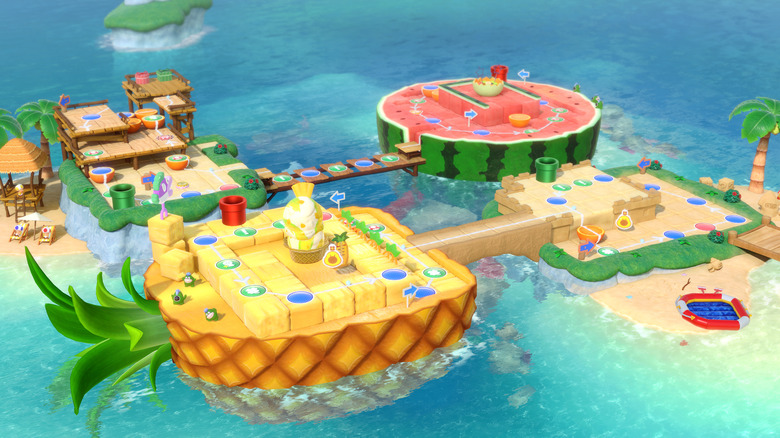Why Super Mario Party Is The Nintendo Switch's Most Disappointing Mario Game
Like any longstanding franchise in gaming, the "Mario" series has had its ups and downs. There are plenty of genre-defining games in the series, but there are also several that disappointed fans and aren't remembered as fondly as a result. In recent years, there haven't been any truly awful "Mario" games — nothing that comes close to being as bad as "Mario Is Missing," to say the least. But there have been some major disappointments — games that "Mario" fans were hyped for that ended up being among the most despised in the franchise.
The "Mario" games available on Nintendo Switch are mostly continuations of older series, like "Mario Kart 8" and "Mario Golf: Super Rush." Though, there are some originals, like "Super Mario Odyssey" too. The "Mario Party" series has the most variety thanks to its use of short-form minigames, and, after Nintendo revealed it would add two classic "Mario Party" games to its Nintendo Switch Online service, fans are looking back on the series' recent entries.
2018's "Super Mario Party" stands out from the others — in a negative way. Fans consider it to be too slow, its minigames too luck-based, with less variety than ever before thanks to repetitive boards and similar minigames. Many gamers consider "Super Mario Party" to be not just the most disappointing "Mario Party" game, but the most disappointing "Mario" game on the Switch – especially when compared to its better-received successor "Mario Party Superstars."
Every aspect of the game takes way too long
One of the most common complaints against "Super Mario Party" was how long everything seemed to take. Events, which are triggered when a player lands on a green exclamation point space, take a particularly lengthy time to play out, and they happen often. On Whomp's Domino Ruins, the entire top row contains a handful of event spaces that trigger a boulder to roll down and push players back to the beginning. The "Domino Trap Sprung" cutscene takes more than 10 seconds to fully play out, and then players are forced to retrace their steps as they try to avoid triggering the boulder again. It feels tedious, to say the least.
The time it takes for the game to transition to a new scene, whether that's with a cutscene for an event or a score update after a minigame, draws out the pace of the game considerably. Animations in general feel like they go on for way too long, and characters take their sweet time getting around the board, rather than speeding from space to space. When compared to the much faster-paced (and more dangerous) "Mario Party Superstars," fans felt disappointed by "Super Mario Party" because it feels sluggish and simplified rather than polished and perfected.
Super Mario Party feels unbalanced with an emphasis on luck over skill
Another common issue that fans had with "Super Mario Party" on release was how little the minigames relied on skill. "Mario Party" is far from a hardcore strategy game, but skill-based games still feel more rewarding and fair than leaving everything up to chance. Other games in the series had a good blend of skill- and luck-based minigames and events. "Super Mario Party" is mostly luck-based with a few skill-based games sprinkled in there. There's less incentive to replay the game because winning seems more determined by chance than skill, like a coin flip rather than a board game.
Another problem is with the ally mechanics, which can easily let players steamroll the competition. It's up to pure chance whether a player lands on a space to get one in the first place, but because allies give a permanent boost to each dice roll of either one or two, they get an unparalleled command over the board. Players consider it to be too easy to get coins and buy stars in "Super Mario Party," so gamers with allies nearly always gain the lead within a few turns and leave others roiling in their wake as they scramble to catch up.
It's normal for a "Mario Party" board to have random events and chance tied into gameplay, but "Super Mario Party" turns it up to 11. To a lot of fans, this makes the game more unpredictable and reduces the players' choices on the outcome more than ever before.
A severe lack of level and board variety
Though the slow pace of the game and its reliance on chance over skill make the game not well-liked among fans, the one major complaint just about everyone had with "Super Mario Party" was its lack of variety. The game shipped with just four total boards to play on, though later updates significantly expanded its online mode. For comparison, "Mario Party Superstars" and "Mario Party 10" have five boards, and almost every game in the series before "Mario Party 9" had at least six. It wouldn't be as much of a problem if these four boards were fun, but they're not — they're all too small and play almost the exact same way as one another.
The minigames suffer from the same problem — not only do most of them feel purely based on chance, but the lack of minigame variety makes players repeat the same ones over and over again. There are 84 minigames in "Super Mario Party," but few of them feel truly unique. There's a plethora of "dodge the thing" minigames, too many brawls in a circular arena, and a large number of games that ask players to memorize or identify something. The motion control minigames are unique, but most of the rest are pretty unremarkable.
There's a lot that fans love about "Super Mario Party," like its roster of characters, its non-standard gameplay, and its online play capabilities. But ultimately, it ends up being the most disappointing of all the "Mario" games on the Switch because it doesn't have the fast-paced, skill-based, and varied gameplay that makes other "Mario Party" games so enjoyable and replayable.




